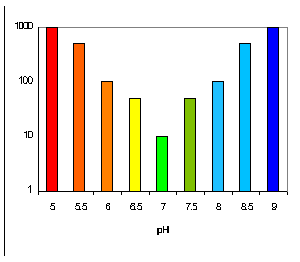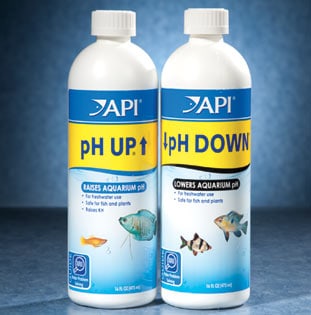PH, ph, or pH, is the measure of acidity or alkalinity of a substance. In this case we will be referring to aquarium water. Seven (7.0) is neutral, less than seven is acidic, and greater than seven is alkaline. One very important thing to note is how ammonia toxicity relates to ph. This is very good to know when moving fish in containers or bags for any length of time. You DO NOT want to raise the ph of the transport water, by adding fresh water!

Most fish prefer to live in waters measuring 6.5 to 8, but some will go slightly lower and some slightly higher on the ph scale. While ph is important, keeping a stable ph is much more important as most fish will adapt to a broad range of ph. Regular water changes go a long way in maintaining a stable ph, but if your tap water is very soft you may need to add additional minerals, which act as buffering agents, to keep your ph stable. A small nylon mesh bag of crushed coral or crushed oyster shell works well. This can be placed in your aquarium filter or hidden in the aquarium. Measure the ph of your aquarium, before and after water changes at least monthly to make sure it is stable. Your local fish retailer should know the water conditions in your area and the fish they sell should be well suited to those conditions.
Many fish keepers of rift valley cichlids from lake Malawi and lake Tanganyika will ensure there are plenty of rocks in the aquarium to help buffer the water and keep it around pH 8.2 which most of the fish are accustomed to.

It is possible to buy agents and water conditioners which will affect the pH value of your water and stabilise it for you ensuring there are no major jumps or changes. It is advisable to test for pH value frequently too, just to make sure it is at the right level for the fish you are keeping.


Related Posts
A Deeper Look In To Loach Fish Species
How Much Salt Should I Add To My Freshwater Aquarium
Everything You Need To Know About Using T5 Lights For Your Aquarium